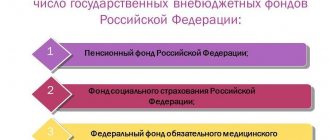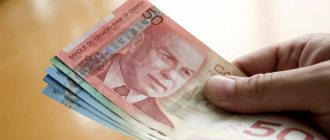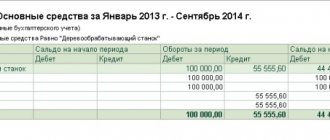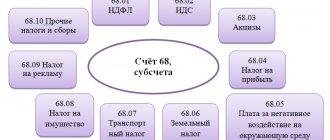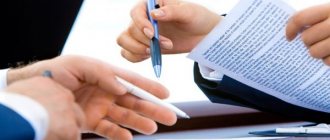Purpose of 11 accounts
The eleventh account in accounting practice is not so common in practice. He is a “worker” for agricultural enterprises involved in raising livestock.
What happens in life is that, due to the specific nature of production activities, certain enterprises use highly specialized balance sheet accounts, which include item 11 “Animals for fattening and rearing.” They are usually used by zoos, circuses, livestock farms, etc.
The indicated position summarizes data on existing animals representing the property of an economic entity and their movement. Such animals include fattening herds, young animals, birds, service dogs, etc.
If we consider the structure of the balance sheet, then the balances on the 11th position of the Chart of Accounts are part of inventories and are reflected in the second asset section of the balance sheet. To make it more convenient to keep track of such transactions, account 11 has sub-accounts, including:
- 11/1, in which young animals are taken into account until the animals reach a certain age and indicators;
- 11/2, which takes into account the main animals in fattening herds;
- There are a number of other sub-accounts that are opened depending on the type of animal.
The costs of keeping animals are reflected in such items as main production (20), auxiliary production (23) and service farms (29).
Accounting entries used involving account 11
There are several entries that are considered standard for a given account - the basis for their use is the accounting policy of the enterprise. The formation of accounting transactions based on primary accounting occurs as follows:
| Debit accounts | Credit accounts | the name of the operation |
| 11 | 15/60 | The animal is purchased from a third party company |
| 01 | Animals from the main herd are taken into account | |
| Maintenance Cost Accounts | Young animals are accepted for balance | |
| How much is the monthly gain in the herd? | ||
| 08 | 11 | Young animals that are ready to be transferred to the main herd |
| 01 | 08 | Transfer of young animals to the main herd |
| 90 | 11 | Transfer (sale) of livestock to a third party |
| 62 | 90 | Payment for sold animals |
| 91 | 01 | Sales of rejected livestock (without fattening) to a livestock procurement company |
| 94 | 11 | Spoilage of livestock – animals that died or were slaughtered as necessary |
| 91 | Assessment of a fallen or forced slaughtered individual |
Animals used in agricultural activities can be considered fixed or working capital. In the first case, we are talking about breeding and working individuals - they are accounted for in sub-accounts opened for account 01.
Cheat sheet on “Accounting and Auditing”
Dt11-2 Kt11-1 transferred young animals to fattening
Dt90 Kt 11-1 young stock sold
Dt84 Kt 11-1 The mortality of young animals is written off
Dt 20-3 Kt 11-1 young animals are slaughtered on their farm
Dt 90 kt 01 and at the same time Dt11-2 Kt 90 productive animals were culled from the main herd and put on fattening
Dt 11-2 Kt 20-2 live weight gain credited
Dt 20-3 Kt 11-2 a shortage of animals was identified (technological mortality was written off)
At the end of the month, the accounting department prepares a summary report on the movement of livestock and poultry on the farm, the data of which is transferred to the journal order 14APK (records for the month and cumulative totals from the beginning of the year).
During the inventory, an inventory list of working livestock, productive animals, bee colonies, and young animals is compiled.
21. Primary, synthetic and analytical accounting of the receipt and internal movement of fixed assets.
The primary document for the capitalization of acquired fixed assets is the supplier’s TTN, on the basis of which the acceptance and transfer certificate of the fixed assets object is filled out in the accounting department.
OS manufactured in the mechanical repair workshop of the farm are transferred to operation upon request-invoice, and are included in the OS by an act of acceptance and transfer of OS objects.
Construction, reconstruction and modernization of objects is formalized by the act of putting the object into operation. Repaired and reconstructed objects are registered on the basis of an act of acceptance and delivery of repaired and modernized fixed assets.
The operating system at agricultural enterprises includes productive livestock. The transfer of young animals to the main herd is formalized by an act for the transfer of animals from group to group. To account for newly planted fruit and shelterbelts, an act of acceptance and transfer of perennial plantings and their commissioning is used. If equipment is being installed on a farm, then the transfer of equipment for installation from a warehouse is formalized by an act of acceptance (receipt) of equipment for installation and an act of acceptance (transfer) of equipment for installation. The transfer of fixed assets from the reporting of one MOL to another is formalized by an invoice for the internal movement of fixed assets objects.
All fixed assets received by the farm must be reflected in analytical accounting registers, they are: an inventory card for recording fixed assets, an inventory card for group accounting of fixed assets.
Inventory cards are recorded in the inventory book of OS objects.
Buh. accounting of fixed assets is maintained on account 01, the Dt of which reflects the presence and receipt of fixed assets, and the write-off of them according to the Cht.
The acquisition of fixed assets, their construction, reconstruction, modernization, costs of transfer to the main herd, costs of planting perennial plantings are taken into account first on account 08, and then written off on account 01.
Dt 08 Kt 60 – the purchase cost of fixed assets is included; Dt 08 Kt 70,69,71,60 – costs of OS delivery are taken into account; Dt 10 Kt 08 – spare parts included in the purchase price of the OS have been capitalized; Dt 01 Kt 08 – fixed assets are capitalized.
OS can be manufactured in their own repair shops: Dt 23/1 Kt 70,69,10,60,23/2 – costs for OS production are taken into account; Dt 08 Kt 23/1 and Dt 01 Kt 08 – OS manufactured in the repair shop were capitalized; Dt 18/1 Kt 68 – VAT charged.
22. Accounting for depreciation of fixed assets. Methods for calculating depreciation.
The method of calculating depreciation is determined by the accounting policy of the enterprise. The main regulatory document is the Regulations on the calculation of depreciation of fixed assets and intangible assets. Depreciation is not accrued: perennial plantings that have not reached fruiting age, fixed assets in conservation or at the stage of reconstruction, public roads, library funds.
Two methods of calculating depreciation: linear and non-linear. With the straight-line method, depreciation is calculated evenly over the entire useful life. Annual depreciation rate (%) = 100/useful life. Annual depreciation amount = norm * cost of the object.
With the non-linear method, depreciation is charged unevenly over the useful life. It includes 2 methods: 1) the method of sum of numbers of years - the sum of numbers of years is determined by the formula: (T*(T+1))/2, where T is the standard service life of fixed assets. 2) the annual depreciation amount is increased by the acceleration factor and the resulting rate is multiplied by the residual value. With the productive method, depreciation is calculated in proportion to the spent resource of the object.
The primary documents for calculating depreciation are: calculation of depreciation for fixed assets, calculation of depreciation for received and retired fixed assets, statement (memorial order) of depreciation for the month.
Depreciation is accounted for on account 02, the amount of accrued depreciation is reflected as a credit, and its write-off is reflected as a debit. Subaccounts: 02-1 Depreciation of own fixed assets, 02-2 Depreciation of long-term leased fixed assets. The following entries are made: Kt 02-1 Dt 20 (depreciation accrued on the fixed assets of the main production), 23-1 (repair shop), 23-2 (freight vehicles), 26 (passenger vehicles, general purpose fixed assets). The calculation of depreciation of MTP has its own peculiarities: it is accounted for separately, the distribution occurs as follows - for tractors - in proportion to the cost of consumed fuel, for plows - the processing area, for highly specialized equipment - directly to crops (Dt 20,10,90, Kt 23) Primary document at the same time, there is a statement of distribution of depreciation and costs for repairing the MTP OS. Dt 02-1 Kt 01 reflects the write-off of depreciation upon disposal of fixed assets. Revaluation of depreciation (Dt 83-1 Kt 02-1).
Accrued depreciation is one of the sources of renewal of fixed assets. In this regard, when calculating depreciation, a depreciation fund is formed monthly, which is recorded in off-balance sheet account 010 “Depreciation fund for the reproduction of fixed assets.” Dt 010, 013 – a depreciation fund was created, Kt – 010, 013 – a depreciation fund was used.
02-2 reflects the accounting for depreciation of fixed assets under leasing. When calculating depreciation, Dt 20, 23, 25, 26 Kt 02-2 are drawn up. The register for analytical accounting of depreciation is Ved 48 - APK “Statement of depreciation and reserve for repairs of fixed assets without vehicles”, led 50 APC “Statement of depreciation for vehicles”. Synthetic accounting – ZhO 10 APK.
23. Accounting for repairs of fixed assets.
To maintain fixed assets in working order, agricultural enterprises periodically carry out their repairs. Regardless of the method of repair, repair costs are included in the cost of products, works and services. Repair of fixed assets can be carried out both in-house (in-house method) and externally (contract method).
In accordance with the accounting policy of the enterprise, the costs of repairing fixed assets can be included in the cost of products, works and services in two ways: 1) as they are incurred in the amount of actual costs; 2) by creating a reserve for the repair of fixed assets.
If repair costs are included in the cost of products, works and services as they are carried out in accounting. accounting entries are made:
Dt 20, 23, 25, 26, 29, 97 Kt 23 - the costs of repairs performed in the repair shop of the farm were written off;
Dt 20, 23, 25, 26, 29, 97 Kt 60 and at the same time Dt 18/1 Kt 60 - the costs of repairs performed externally are written off;
Dt 20, 23, 25, 26, 29, 97 Kt 70, 69, 10 - the costs of repairs performed on site are taken into account.
Primary documents: work order for piecework, demand invoice, statement for receipt of spare parts. parts and repair materials, work orders, acceptance certificates for completed work along with a VAT invoice.
A reserve for the repair of fixed assets is created with the aim of uniformly including repair costs in the cost of products, works and services. The standard for contributions to the reserve for repairs is determined by dividing the planned annual costs for repairs by the book value of fixed assets.
In order to determine the amount of the reserve for a month, it is necessary to multiply the calculated standard by the book value of the corresponding type of fixed assets.
Dt 20, 23, 25, 26, 97, 29 Kt 96 - a reserve was created for the repair of fixed assets;
As repair costs are completed, they are written off during the year from the created reserve.
Dt 96 Kt 23/1 - costs for repairs performed in a repair shop are written off;
Dt 96 Kt 60, Dt 18 Kt 60 - costs for repairs performed externally are written off;
Dt 96 Kt 70, 69, 10, 23 - costs for repairs performed on site are written off.
If at the end of the year the accrued reserve is not enough to write off the actual costs of repairs, then it is additionally accrued. (Dt 20, 23, 25, 26 Kt 96), and if the reserve is not fully used, then it is reversed (Dt 20, 23, 25, 26 Kt 96).
Analytical accounting of the costs of repairing fixed assets is carried out object by object in the production report for capital and current repairs of fixed assets. Synthetic accounting - in railway station No. 10-APK.
24. Accounting for intangible assets and their depreciation.
Intangible assets - patents for inventions, industrial designs, know-how, copyrights for works of science and literature, computer programs, databases, business reputation. Accounting is maintained on account 04: 04-1 the right to intellectual property, 04-2 the right to use natural objects, 04-3 business reputation. Purchase of intangible assets: Dt 08 Kt 60 - the purchase price of intangible assets has been capitalized. Dt 08 Kt 70, 69, 71,23,60 - the costs of acquiring intangible assets are taken into account. Dt 04 Kt 08 – intangible assets are capitalized at actual cost. Dt 18 Kt 60, 76 – VAT is reflected on capitalized intangible assets. Write-off of intangible assets: Dt 05 Kt 04 – depreciation accrued on intangible assets is written off. Dt 91 Kt 04 – the residual value of intangible assets is written off. Dt 91 Kt 70, 71 23 – expenses for writing off intangible assets are taken into account. Dt 62 Kt 91 – debt accrued to buyers for sold intangible assets. Dt 91 Kt 99 – The financial result from the sale of intangible assets is written off. The basis for capitalization is the act of acceptance of intangible assets. Individual accounting is maintained on intangible asset inventory cards. Depreciation is calculated based on the selected useful life using linear, non-linear and productive methods (used in business activities) and linear methods – not used in business activities. Calculation of depreciation by types and names of intangible assets is carried out in the development table “Calculation of depreciation of fixed assets and intangible assets”. The sinking fund is maintained on account 013. Dt 013 – education, Kt – use. The sinking fund is a source of recovery of intangible assets. Synthetic accounting for account 05 - ZhO 10 agro-industrial complex, for 04 - 13 agro-industrial complex.
25. Primary, synthetic and analytical accounting of fertilizers and spare parts.
Accounting for inventories is carried out on active balance sheet account 10, the Dt of which reflects the availability and receipt, and the Kt reflects their expenditure.
All types of fertilizers are accounted for in subaccount 10/4.
If manure is stored in a manure storage facility: Dt 10/4 Kt 20/2, 23 - manure from productive livestock and working horses is received.
If manure is transported to fields from the farm: Dt 20/1 Kt 20/2.
Purchased mineral fertilizers are recorded as follows: Dt 10/4 Kt 60.
In practice, agricultural production often began to use green fertilizers (lake rye for plowing, lupine, clover). Dt 20/1 analyt. account “sowing lupine” Kt 70.69.10/4.10/10 - the costs of sowing lupine intended for plowing are taken into account.
Dt 20/1 analyt. account "potatoes" Kt 20/1 analytical. account "sowing lupine".
Basically, fertilizers are applied to crops as top dressing: Dt 20/1 Kt 10/4; Dt 94 Kt 10 - shortage of fertilizers written off; Dt 91 Kt 10/4 - fertilizers sold for cash.
On subaccount 10/8, records are kept. parts, batteries, car tires in the context of the following groups:
spare parts (separately for tractors and cars)
batteries
tires
spare parts and tires subject to restoration
spare parts and parts with residual life
For each type of spare parts, according to their names, a separate warehouse registration card is opened in the warehouse. In accounting, spare parts are recorded only in monetary terms by groups of vehicles (tractors, cars, combines). Entries: Dt 10/8 Kt 60 - spare parts received from the supplier were capitalized;
Dt 10/8 Kt 71 - spare parts were purchased using accountable funds; Dt 10/8 Kt 91 - spare parts from the write-off of OS and equipment have been capitalized.
Spare parts are spent mainly on OS repairs, construction of temporary non-title structures, and capital construction, which is reflected: Dt 08 Kt 10/8 - spare parts for equipment installation are written off; Dt 23, 20/2, 25, 26 Kt 10/8 - spare parts written off for OS repair; Dt 97 Kt 10/8 - spare parts for the construction of summer camps were written off; Dt 96 Kt 10/8 - spare parts for OS repairs are written off if the farm creates a reserve for OS repairs.
Analyst. Accounting for spare parts in total terms is kept in the list of balances of materials, spare parts, building materials (46-APK), and synthetic ones in railway 10-APK.
30 Accounting for the costs of maintaining and operating MTP and combines
Costs for MTP (except for labor costs and costs of petroleum products) are taken into account on account 24 “expenses for the maintenance and operation of machinery and equipment” 24-1 maintenance and operation of MTP, 24-2 maintenance and operation of self-propelled vehicles, 24-3 maintenance e and operation of production equipment, 24-4 supply and operation of construction machines and equipment
Accounting is carried out under the following items: expenses for the installation and operation of the operating system, works and services
Examples of transactions and postings on account 11
Example 1. Purchase of young animals under a sales contract
Let’s say Vesna LLC purchased cattle and young stock at a cost of 120,000 rubles. The cost of delivering livestock amounted to 55,000 rubles.
Vesna LLC accounts for animals in account 11 at actual cost, which is enshrined in the accounting policy, and does not apply to VAT payers.
In the accounting of Vesna LLC, the following entries are made to account 11 when purchasing young cattle:
| Dt | CT | Transaction amount, rub. | Wiring Description | A document base |
| 11 | 60 | 175 000 | Receipt of animals reflected | TTN, veterinary certificates |
| 60 | 51 | 175 000 | Payment made to supplier | Payment order |
Example 2. Purchase of young animals under a sales contract using 15 and 16 accounts
Let’s say Vesna LLC purchased 11 heads of cattle (young cattle) worth 11,000 rubles. Costs for the delivery of animals – 26,000 rubles. The accounting price of young animals is 12,000 rubles.
Vesna LLC accounts for animals on accounts 15 and 16 at the accounting price, which is enshrined in the accounting policy and does not apply to VAT payers.
In the accounting of Vesna LLC, the following entries are made to account 11 when purchasing young cattle using accounts 15 and 16:
| Dt | CT | Transaction amount, rub. | Wiring Description | A document base |
| 15 | 60 | 121 000 | The receipt of animals is reflected (assessment according to the contract). | TTN, veterinary certificates |
| 15 | 60 | 26 000 | Expenses are included in the actual cost of animals. | TTN, etc. |
| 11 | 15 | 132 000 | Posting of animals at the accounting price. | |
| 15 | 16 | 11 000 | Deviation of the actual cost from the accounting price (excess). | Accounting information |
| 60 | 51 | 147 000 | Payment has been made to the supplier. | Payment order |
Accounting: receipt on account of the contribution to the authorized capital
The actual cost of young animals (adult animals for growing and fattening, birds, animals, rabbits, bee families) contributed to the contribution to the authorized (joint) capital is equal to the monetary value agreed upon by the founders (participants, shareholders) of the organization. It can be increased by the amount of transportation and procurement costs. This is stated in paragraph 10 of the Methodological Recommendations, approved by Order of the Ministry of Agriculture of Russia dated February 2, 2004 No. 73.
To confirm the market value of the contribution in the form of animals, the joint-stock company must engage an independent appraiser. For an LLC, an independent assessment of the property contribution is mandatory only if its size exceeds RUB 20,000. In this case, the founders (participants, shareholders) can approve the value of the property contributed to the authorized capital not higher than the assessment of an independent expert (i.e. lower or in the same amount). Such rules are established by paragraph 2 of Article 15 of the Law of February 8, 1998 No. 14-FZ and paragraph 3 of Article 34 of the Law of December 26, 1995 No. 208-FZ.
Reflect the receipt of animals (young animals) as a contribution to the authorized capital by posting:
Debit 11 (15) Credit 75-1
– animals were received as a contribution to the authorized capital.
This follows from the Methodological Recommendations approved by Order of the Ministry of Agriculture of Russia dated June 13, 2001 No. 654.
An example of reflecting in accounting the receipt of animals (young animals) as a contribution to the authorized capital
Animals worth 100,000 rubles were contributed as a contribution to the authorized capital of Alpha CJSC. The cost of these animals is confirmed by the appraiser's report and approved by the decision of the general meeting of shareholders of the organization. Delivery costs amounted to 10,000 rubles. The organization accounts for animals on account 11 at actual cost (without using accounts 15 and 16).
The organization is not a VAT payer.
Alpha's accountant made the following entries in accounting:
Debit 11 Credit 75-1 – 100,000 rub. – animals were received as a contribution to the authorized capital;
Debit 11 Credit 60 – 10,000 rub. – the cost of shipping animals is reflected.
If the organization received adult animals (breeding, productive, draft animals) as a contribution to the authorized capital, reflect them as part of fixed assets in the monetary value agreed upon by the founders (participants, shareholders):
Debit 08 subaccount “Purchase of adult animals” Credit 75-1
– reflects the cost of animals received as a contribution to the authorized capital, which will be taken into account as part of fixed assets;
Debit 08 subaccount “Purchase of adult animals” Credit 23 (26, 60, 76...)
– reflects the costs associated with receiving animals as a contribution to the authorized capital.
Upon completion of operations to form the main herd:
Debit 01 sub-account “Working and productive livestock” Credit 08
– pedigree, productive and working livestock received as a contribution to the authorized capital are accepted for accounting.
This procedure follows from paragraph 9 of PBU 6/01, paragraph 71 of the Methodological Recommendations, approved by Order of the Ministry of Agriculture of Russia dated June 19, 2002 No. 559.

